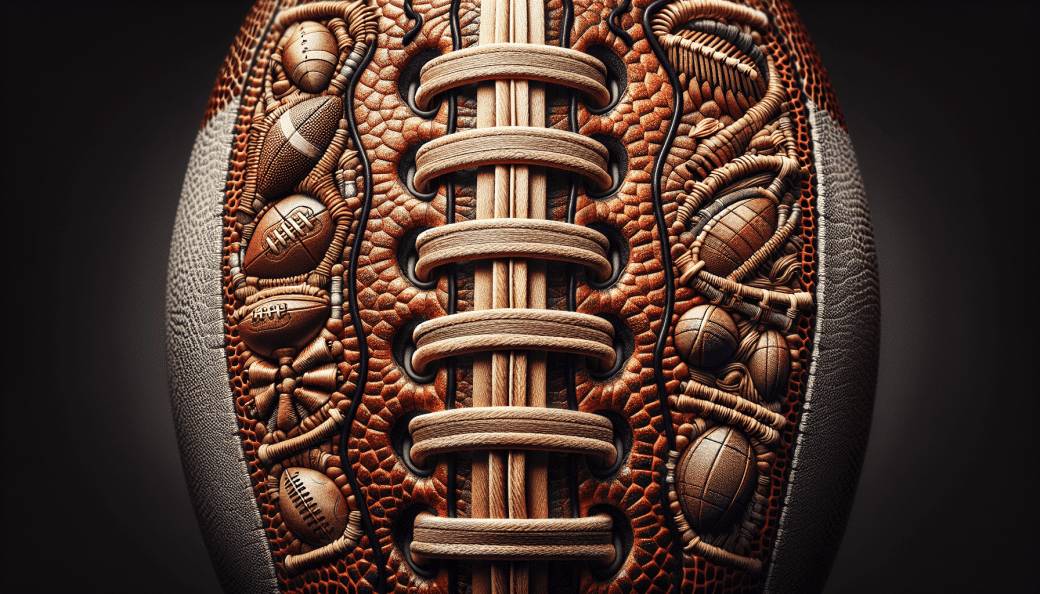Get ready to take your American football skills to the next level as we delve into the world of pro training drills. In “Unlocking Pro Moves: Mastering American Football Training Drills with Elite Coaches Insights,” we’ll provide you with the inside scoop on the training techniques used by elite coaches in the game. This comprehensive guide will give you a step-by-step breakdown of the drills, along with expert tips and advice to help you fine-tune your skills. Whether you’re a seasoned player or just starting out, this article has everything you need to become a master on the field. So grab your gear, get ready to sweat, and let’s unlock those pro moves!

The Importance of Training Drills in American Football
American football is a complex and physically demanding sport that requires a combination of skills, technique, and teamwork. Whether you’re a seasoned athlete or just starting out, training drills are essential for enhancing performance and developing fundamental skills. These drills not only build muscle memory but also improve technique and form, giving players the ability to perform at their best on the field.
Enhancing Performance and Skills
Training drills play a critical role in enhancing overall performance and refining specific skills in American football. By consistently practicing various drills, players can improve their speed, agility, strength, and coordination. These drills also help athletes develop their hand-eye coordination, reaction time, and decision-making abilities, which are all crucial in the fast-paced and dynamic nature of the game.
Building Muscle Memory
Repetition is key when it comes to building muscle memory in American football. Training drills allow players to perform specific movements and techniques repeatedly, ingraining them into their muscle memory. This muscle memory is essential as it enables players to execute plays and techniques instinctively and without conscious thought during the chaos of a game. By regularly practicing drills, players can improve their muscle memory, leading to better performance on the field.
Improving Technique and Form
Training drills are designed to focus on specific aspects of technique and form in American football. From footwork and body positioning to tackling and blocking techniques, drills give players the opportunity to refine their skills and improve their technique. Proper technique and form are essential in minimizing the risk of injuries and maximizing performance. By incorporating drills that target these aspects, players can make significant strides in improving their overall game.
Choosing the Right Training Drills
While training drills are important, not all drills are suitable for every player or position in American football. It’s crucial to choose drills that are tailored to a player’s position and focus on specific skills they need to develop. By selecting the right drills, players can maximize their training sessions and make the most of their practice time.
Tailoring Drills to Position
Each position in American football requires specific skills and techniques. Therefore, it’s essential to tailor training drills to the position a player plays. For example, a wide receiver may focus on drills that enhance their route-running and catching abilities, while a quarterback may work on drills that improve their throwing accuracy and decision-making under pressure. By tailoring drills to a player’s position, they can effectively work on the skills that are most important to their role on the team.
Focusing on Specific Skills
In addition to tailoring drills to position, it’s crucial to choose drills that focus on specific skills that need improvement. Whether it’s agility, speed, strength, or endurance, coaches and players should identify areas for development and select drills that target those specific skills. By incorporating drills that address these weaknesses, players can make significant strides in improving their overall performance and addressing specific areas of improvement.
Progressive and Varied Training
To ensure continuous improvement, it’s important to incorporate progressive and varied training drills. Progressive training involves gradually increasing the intensity, complexity, or duration of drills over time. This ensures that players continue to challenge themselves and make progress in their development. Additionally, incorporating varied training drills keeps practice sessions engaging and prevents players from becoming stagnant or bored. By mixing up the drills and introducing new challenges, coaches can keep players motivated and continually pushing themselves to improve.

1-on-1 Drills for Offensive Players
Offensive players in American football need to possess a range of skills and abilities to excel on the field. 1-on-1 drills provide an opportunity for offensive players to refine their techniques and develop their skills in a controlled and focused setting.
Wide Receiver Route Running
Route running is a crucial skill for wide receivers in American football. 1-on-1 drills can help receivers work on their route-running technique, including their cuts, timing, and ability to create separation from defenders. These drills often involve a receiver going up against a cornerback or a safety, simulating game-like situations and allowing the receiver to practice different routes and adjustments.
Quarterback-Receiver Connection
The connection between a quarterback and a receiver is essential in American football. 1-on-1 drills that focus on the quarterback-receiver relationship can help develop trust, timing, and communication between the two players. These drills often involve the quarterback and receiver working together to execute specific plays and routes, allowing them to develop chemistry and improve their connection on the field.
Running Back Blocking Techniques
Blocking is an important skill for running backs in American football, as they often need to protect the quarterback by picking up blitzing defenders. 1-on-1 drills can help running backs refine their blocking techniques, including footwork, hand placement, and reading defensive alignments. These drills typically involve a running back going up against a linebacker or a defensive back, simulating game-like scenarios and providing valuable practice for pass protection situations.
Defensive Drills for Individual Skill Development
Defense is a crucial aspect of American football, and individual defensive players need to develop their skills and techniques to be effective on the field. Defensive drills provide an opportunity for players to focus on their individual skill development and improve their performance.
Defensive Back Technique
Defensive backs need to possess excellent coverage skills, including footwork, speed, and awareness. Drills focusing on defensive back technique can help players improve their coverage techniques, such as backpedaling, flipping hips, and mirroring receivers. These drills often involve defensive backs facing off against wide receivers in various drills that simulate game-like situations and allow defenders to work on their technique and positioning.
Linebacker Tackling Fundamentals
Linebackers are often tasked with stopping the run and making tackles in American football. Developing strong tackling fundamentals is crucial for linebackers to be successful on the field. Drills that focus on linebacker tackling techniques can help players improve their tackling form, including body positioning, leverage, and wrapping up. These drills often involve linebackers practicing tackling against running backs or in tackling circuits, allowing them to refine their technique and build confidence in their tackling abilities.
Defensive Line Pass Rush Moves
Pass rushers on the defensive line play a critical role in pressuring the quarterback and disrupting the opposing team’s passing game. Drills that focus on defensive line pass rush moves can help players improve their technique, hand placement, and overall pass rushing skills. These drills often involve defensive linemen practicing various moves, such as bull rushes, swim moves, and spin moves, against offensive linemen. By refining their technique through these drills, pass rushers can become more effective in generating pressure and making impactful plays on the field.

Group and Team Drills for Cohesion
American football is a team sport, and effective teamwork and cohesion are essential for success on the field. Group and team drills provide an opportunity for players to work together, develop chemistry, and enhance their understanding of the game.
Offensive Line Run Blocking
The offensive line plays a critical role in creating running lanes for the ball carrier in American football. Group drills that focus on offensive line run blocking help linemen develop their synchronization, communication, and technique when blocking for the running back. These drills often involve the entire offensive line working together to execute various run blocking schemes, allowing them to develop cohesion and improve their ability to open up running lanes.
Defensive Secondary Zone Coverage
The defensive secondary, including cornerbacks and safeties, needs to work together to effectively cover passing routes and defend against the opposing team’s passing game. Team drills that focus on defensive secondary zone coverage help players develop their communication, positioning, and awareness when defending against the pass. These drills often involve defensive backs working together to cover specific areas of the field and communicate effectively to prevent receivers from getting open.
Special Teams Coordination
Special teams play a crucial role in American football, including kickoffs, punts, and field goals. Team drills that focus on special teams coordination help players develop their timing, communication, and execution in various special teams situations. These drills often involve the entire special teams unit working together to practice kickoff returns, punt coverage, and field goal blocking, allowing them to develop the necessary cohesion and coordination for success on special teams.
Conditioning Drills for Endurance and Stamina
American football is a physically demanding sport that requires players to have excellent endurance and stamina. Conditioning drills are an essential part of training to ensure players can perform at a high level throughout the game.
Agility and Footwork Exercises
Agility and footwork are critical in American football, as players need to change directions quickly, evade defenders, and maintain balance. Conditioning drills that focus on agility and footwork can help players improve their quickness, reaction time, and overall coordination. These drills often involve ladder drills, cone drills, and shuttle runs that challenge players’ speed, agility, and footwork in a high-intensity setting.
Cardiovascular Training Regimens
Cardiovascular fitness is crucial for players to sustain high-intensity efforts throughout the game. Conditioning drills that focus on cardiovascular training involve exercises that elevate the heart rate and challenge players’ endurance. These drills often include sprints, distance running, and interval training that push players to their limits and improve their cardiovascular capacity and stamina.
Interval Sprints and Shuttle Runs
Interval sprints and shuttle runs are effective conditioning drills that simulate the stop-and-start nature of American football. These drills involve short bursts of high-intensity sprints followed by brief periods of rest or recovery. Interval sprints and shuttle runs help players improve their explosiveness, acceleration, and recovery time. By incorporating these drills into their training, players can develop the necessary endurance and speed required to perform at their best on the field.
Utilizing Technology in Football Training
Technology has revolutionized the way athletes train in various sports, including American football. From video analysis to wearable tech and virtual reality simulations, technology has become an invaluable tool in enhancing players’ performance and training experience.
Video Analysis for Performance Evaluation
Video analysis allows coaches and players to review and analyze game footage, practice sessions, and individual performances. By breaking down videos, coaches can provide valuable feedback, identify areas for improvement, and develop strategies for enhanced performance. Video analysis helps players visualize their performance, understand their strengths and weaknesses, and make adjustments to improve their overall skills and technique.
Wearable Tech for Tracking Metrics
Wearable tech devices, such as GPS trackers, heart rate monitors, and accelerometers, provide valuable data and metrics during training sessions and games. These devices allow coaches and strength and conditioning staff to track players’ performance, monitor their workload, and evaluate their progress. Wearable tech provides objective measurements, allowing players and coaches to make data-driven decisions for optimizing training, preventing injuries, and enhancing performance.
Virtual Reality Simulations
Virtual reality (VR) simulations have emerged as a cutting-edge tool for training in American football. VR simulations allow players to experience realistic game scenarios in a virtual environment, providing valuable reps and mental preparation without the physical contact. By immersing players in game-like situations, VR simulations help improve decision-making, reaction time, and situational awareness on the field. This technology offers a safe and controlled environment for players to train and refine their skills.
Importance of Coaches’ Insights in Training
Coaches play a vital role in the development and training of American football players. Their years of experience, expertise, and individualized feedback are essential in guiding players and maximizing their potential.
Years of Experience and Expertise
Coaches bring a wealth of experience and expertise to the training process. Their knowledge of the game, understanding of strategy, and familiarity with techniques and skills are invaluable for players’ development. Coaches’ years of experience provide them with insights and perspectives that can help players refine their skills, make strategic decisions, and elevate their performance on the field.
Individualized Feedback and Guidance
One of the primary roles of a coach is to provide individualized feedback and guidance to players. Coaches observe players’ performance, identify areas for improvement, and offer specific feedback to help players refine their skills and technique. This personalized approach allows players to address their weaknesses, build on their strengths, and make progress in their development. Coaches’ feedback and guidance are instrumental in helping players reach their full potential.
Motivational Strategies for Players
Coaches not only provide technical guidance but also serve as motivators and mentors for players. They help create a positive and supportive training environment, inspire players to push their limits, and instill a sense of discipline and dedication. Coaches’ motivational strategies, whether through uplifting speeches, team-building exercises, or individual encouragement, can have a profound impact on players’ mindset, motivation, and overall development.
Incorporating Mental Training into Drills
While physical preparation is essential, mental training is equally important in American football. Incorporating mental training into drills helps players develop their mental resilience, focus, and strategic thinking.
Visualizing Success and Focus
Visualization exercises are powerful tools for athletes to enhance their performance and focus. By visualizing themselves executing plays, making successful tackles, or scoring touchdowns, players can develop a mental image of success. This visualization technique helps players stay focused, build confidence, and improve their overall performance on the field.
Mindfulness and Stress Management
American football can be a high-pressure and intense sport, and players need to develop mindfulness and stress management skills to perform at their best. Incorporating mindfulness exercises into training drills allows players to cultivate a present-moment awareness, reduce anxiety, and improve concentration. These techniques help players stay calm under pressure and make sound decisions during fast-paced and high-stress situations.
Building Mental Resilience
Mental resilience is crucial in American football, as players will face setbacks, adversity, and challenging situations on the field. Training drills can incorporate mental resilience-building exercises that simulate difficult scenarios, such as making a comeback in a game or facing a strong opponent. By putting players in mentally challenging situations, drills help them develop the mental toughness, perseverance, and resilience needed to overcome obstacles and perform at their best.
Conclusion
Training drills are an integral part of American football, enabling players to enhance their performance, develop essential skills, and build a cohesive team. By choosing the right drills and incorporating a variety of techniques, athletes can maximize their training sessions and make the most of their practice time. With the help of technology, coaches’ insights, and mental training, players can unlock their full potential and master the art of American football. So lace up your cleats, grab a football, and get ready to take your game to the next level with the power of training drills.



